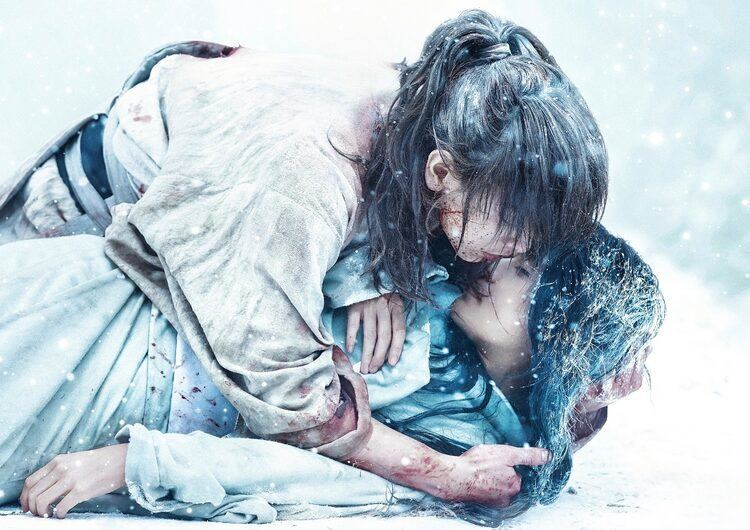Among both the manga and live-action films, this may be the most emotionally gripping chapter of all.
Synopsis
The fifth and final installment of the live-action Rurouni Kenshin series, The Beginning serves as a companion piece to The Final. Adapted from Nobuhiro Watsuki’s highly acclaimed manga, this film delves into the “Trust & Betrayal” arc—a fan-favorite—and travels back in time to the chaotic Bakumatsu era. Here, we witness the untold story of how Kenshin Himura, portrayed by Takeru Satoh, became the feared assassin known as “Hitokiri Battōsai,” and how a single woman changed his life forever.
In the final years of the Tokugawa shogunate, Kenshin operates as a deadly assassin under Katsura Kogorō, a leader of the anti-shogunate Chōshū clan. Feared for his ruthless efficiency, Kenshin’s fate changes when he encounters a mysterious woman named Yukishiro Tomoe. After a failed assassination, Kenshin and Tomoe go into hiding in a rural village—sparking a love that is as tragic as it is transformative.
Kenshin the Assassin: A Man Before Redemption
This film unveils a side of Kenshin we rarely see—before his vow never to kill, before his journey of atonement. Here, he is a man drenched in blood, carrying the weight of every life taken in the name of a new era. His heart begins to shift when he meets Tomoe, a woman whose presence slowly softens his hardened soul. What starts as a calculated alliance blossoms into something neither of them anticipated.
From the very beginning, casting Takeru Satoh and Kasumi Arimura promised something remarkable. And once the visuals were released, it became clear—Arimura was Tomoe: pale, elegant, poised, and painfully sincere.
Though Tomoe initially approaches Kenshin with the intent to avenge her fiancé—one of his many victims—her heart changes. Eventually, she sacrifices herself to save the very man who took everything from her. On paper, her story may seem pitiful, but in the film, it’s layered, quiet, and undeniably beautiful.
Her expressions, her diary, and her final words all speak volumes about the brief, fragile happiness she found. It’s a love story too raw to be defined by “sad” or “tragic” alone.
Highlights
1. The Subtle Evolution of Kenshin’s Expression
Kenshin begins as a stoic assassin, burdened by guilt. Yet, after meeting Tomoe, his expressions begin to change—he smiles more, sleeps peacefully for the first time, and even stops clutching his sword while resting. This emotional evolution, conveyed largely through body language and facial cues, is one of the film’s most touching aspects.
2. Tomoe’s Emotional Confession
Usually quiet and reserved, Tomoe has a scene where she finally reveals her past, including the death of her fiancé. Kasumi Arimura’s restrained yet heartbreaking performance elevates this into one of the movie’s standout moments. Kenshin’s silent reactions speak louder than words—this kind of nonverbal storytelling is unique to this chapter of the series.
3. The Intimate Scene Between Kenshin and Tomoe
Although short, the scene where the two become physically and emotionally close is remarkably tasteful. It isn’t about passion, but rather two broken people quietly reaching out to protect each other. It is delicate, sincere, and emotionally resonant—perhaps one of the most tender depictions of love in any manga adaptation.
A Love Story Unlike Any Other in Samurai Cinema
The film beautifully contrasts the flowing, almost poetic swordplay of Kenshin with the quiet, unwavering presence of Tomoe. Their love grows not through declarations, but through glances, gestures, and shared silences. With a rich visual style, faithful storytelling, and a powerful cast that includes Masanobu Ando and Kazuki Kitamura, this film is a cinematic achievement.
Filmed across 11 locations in Japan, The Beginning isn’t just a prequel—it’s a meditation on love, guilt, and redemption. If you’ve already seen The Final, or even if you haven’t, this film is essential viewing. And when you’re done, go back to the beginning—this time, with new eyes.
